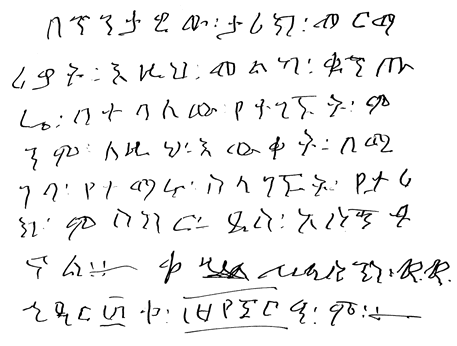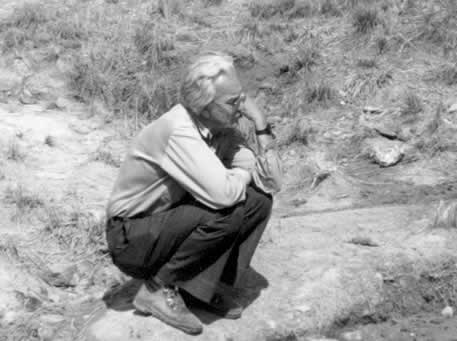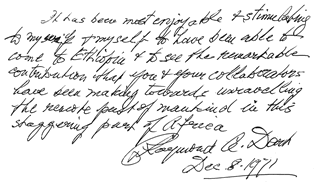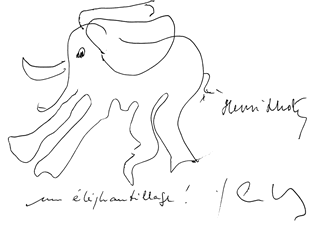- | Home
- | Melka Kunture
- | History of Research
- | Museum
- | For Scientists
- | Bibliography
- | Culture 2000 |
The start
Until 1963, the prehistory of Ethiopia was not well known and was unexplored beyond the 100,000 years-old threshold.
In 1963 Gerard Dekker, a hydrologist from the Netherlands with a passion for prehistoric research and a friend of L.S.B. Leakey, discovered Acheulean and Middle Stone Age lithic tools and faunal remains at the Kella locality, near the Awash village, on the road to Butajira, 50 km south to Addis Abeba, and he immediately informed the Ethiopian authorities in Addis Ababa.
The discovery was really important. Till that year, no Acheulean evidences were known all over Ethiopia and only a few sites were known in the Horn of Africa. Amongst them, the most important was Olduvai Gorge in Tanzania, discovered in 1913 by H. Reck and excavated and studied by Louis and Mary Leakey since 1923 until 1975.

Comment of Emperor Haile Selassie during the visit to the site on 1970
"
The findings of artefacts at Melka Kunture by professional reserarchers gave us a great pleasure."
The importance of the discovery made by Dekker was immediately comprised by the Ethiopian Institute of Archaeology at that time directed by Mr. Admassu Shiferau with the advice of the French archaeologist Francis Anfray who had excavated and studied sites such as Axum, Yeha and Matahara.
Following a first survey and a report published by the French archaeologist Gérard Bailloud, the real importance of the site was really comprised a few years later, thanks to the systematic researches carried out by the French archaeologist and geologist J. Chavaillon of the CNRS, who showed that the continuous hominids frequentation along both banks of this part of the Awash River dated back to the Oldowan, that means to the technological complex preceding the Acheulean and dated to 1.9-1.5 Myr

The hydrogeologist Gerard Dekker who discovered Melka Kunture in 1963

Comment of Glynn Isaac during the visit at Melka in 1971
 |
Comment of Raymond Dart during the visit at Melka in 1971 |
 |
Comments of Henry Lhote and Yves Coppens during the visit at Melka in 1971 |